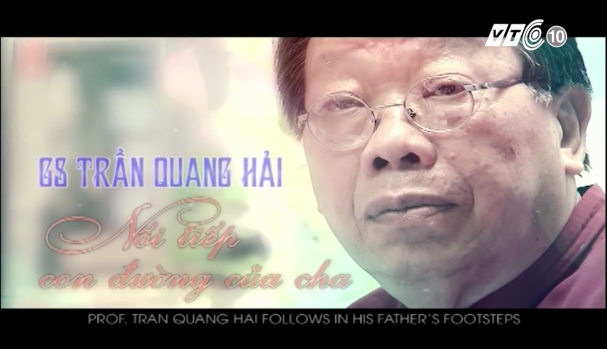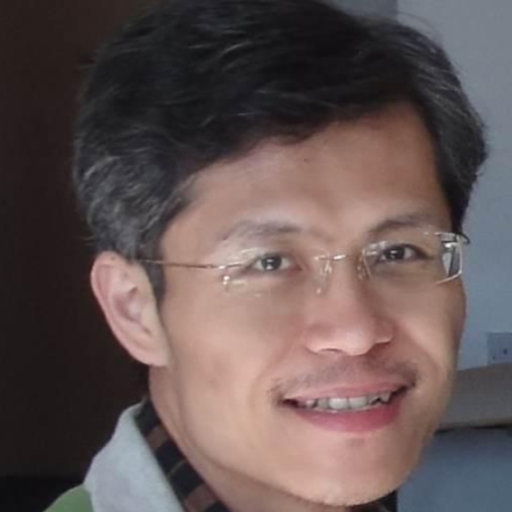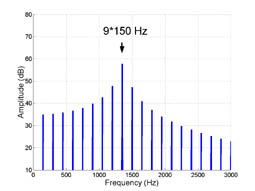Tsai, Chen-Gia
Associate professor, Graduate Institute of Musicology
Ctr. for Neurobiology and Cognitive Science
National Taiwan University, Taiwan
Research Interests
Biomusicology, neuroesthetics, arts and medicine, affective science, music acoustics, Xiqu
Books
Tsai, C.G.*, & Chen, R.S. (2017). Structures and Emotions in Chinese Sentimental Ballads: A Perspective of Cognitive Psychology (in Chinese). Taipei: Faces Publishing LTD.
Tsai, C.G. (2013). The Cognitive Psychology of Music (in Chinese). Taipei: NTU Press.
Tsai, C.G. (2011). Alternative Watching/Listening: Brain Diseases and Voice Disorders in Performing Arts (in Chinese). Taipei: NTU Press.
Journal Articles
Tsai, C.G. (2018). The psychology of musical creativity: the self, executive control, and generation of creative ideas (in Chinese). Journal of National Taiwan University of Arts, 27.
Tsai, C.G., Chou T.L., & Li, C.W.* (2018). Roles of posterior parietal and dorsal premotor cortices in relative pitch processing: comparing musical intervals to lexical tones. Neuropsychologia, 119, 118-127. [SCI, IF=2.888]
Tsai, C.G., Du, W., & Chen, C.L.* (2017). Influence of literature music on the museum visitor experience: a case study of the Laiho Memorial Museum (in Chinese). Museology Quarterly, 31(3), 5-29.
Tsai, C.G., Li, C.W., Yeh, C.H., Chen, R.S., & Lin, Y.S.* (2017). Why do mandarin popular songs usually deal with break-ups? The therapeutic potential of sentimental ballads (in Chinese). Indigenous Psychological Research in Chinese Societies, 47, 371-420. [TSSCI]
Wu, M.T., & Tsai, C.G.* (2017). Emotional effects of Teresa Teng’s songs in Taiwanese healthy and disabled older adults (in Chinese). Journal of Humanities, Social Sciences and Medicine, 4, 119-138.
Tsai, C.G.*, & Hsia, L.T. (2107). Musical features and theatrical uses of Jin-La-Man-Chang rhythmic mode in Xiqu (in Chinese). Taipei Theatre Journal, 25, 105-128.
Wen, Y.C., & Tsai, C.G.* (2017). The effect of harmonization on cortical magnetic responses evoked by music of rapidly changing tonalities. Psychology of Music, 45(1), 22-35. [SSCI, IF=2.173]
Cheng, T.H., & Tsai, C.G.* (2016). Female listeners’ autonomic responses to dramatic shifts between loud and soft music/sound passages: a study of heavy metal songs. Frontiers in Psychology, 7, 182. [SSCI, IF=2.560]
Tsai, Y.H., & Tsai, C.G.* (2016). Emotional effects of the chorus scenes in musicals on audience: a study on Les Misérables and Chicago (in Chinese). Collected Papers on Arts Research, 25, 147-166.
Li, C.W., Chen, J.H., & Tsai, C.G.* (2015). Listening to music in a risk-reward context: the roles of the temporoparietal junction and the orbitofrontal/insular cortices in reward-anticipation, reward-gain, and reward-loss. Brain Research, 1629, 160-170. [SCI, IF=2.988]
Chen, C.L., & Tsai, C.G.* (2015). The influence of background music on the visitor museum experience: a case study of the Laiho Memorial Museum. Visitor Studies, 18(2), 183-195.
Tsai, C.G.*, & Chen, C.P. (2015). Musical tension over time: listeners’ physiological responses to the ‘retransition’ in classical sonata form. Journal of New Music Research, 44(3), 271-286. [SSCI, IF=0.771]
Tsai, C.G.*, Yang, C.M., Chen, C.C., Chen, I.P., & Liang, K.C. (2015). Relaxation and executive control processes in listeners: an exploratory study of music-induced transient suppression of skin conductance responses. Empirical Studies of the Arts, 33(2), 125-143. [SSCI, IF=0.370]
Chang, Y.H., Lee, Y.Y., Liang, K.C., Chen, I. P., Tsai, C.G.*, & Hsieh, S.* (2015). Experiencing affective music in eyes-closed and eyes-open states: an electroencephalography study. Frontiers in Psychology, 6, 1160. [SSCI, IF=2.560]
Tsai, C.G., Chen, C.C., Wen, Y.C., & Chou T.L.* (2015). Neuromagnetic brain activities associated with perceptual categorization and sound-content incongruency: a comparison of music and speech. Frontiers in Human Neuroscience, 9, 455. [SCI, IF=3.626]
Tzeng, N.S., & Tsai, C.G.* (2015). Dutuo and salvation in Beijing Opera Peng-Bei (Tragic Monument in Yang’s Saga) and Nan-Tien-Men (South Heavenly Gate): a study from the perspectives of psychiatry and audience psychology (in Chinese). Taipei Theatre Journal, 22, 25-50.
Tsai, C.G., & Tzeng. N.S.* (2015). Music therapy for the elderly: perspectives from cognitive neuroscience (in Chinese). Journal of Humanities, Social Sciences and Medicine, 2, 87-106.
Tsai, C.G.*, Chen, R.S., & Yu, S.P. (2014). Analyzing the verse-chorus form: schema shifts and musical rewards in lyrical-slow songs (in Chinese). Research in Applied Psychology, 61, 239-286.
Tsai, C.G.*, Chen, R.S., & Tsai, T.S. (2014). The arousing and cathartic effects of popular heartbreak songs as revealed in the physiological responses of listeners. Musicae Scientiae, 18(4), 410-422. [SSCI, IF=1.537]
Tan, W.H., Tsai, C.G., Lin, C., & Lin, Y.K.* (2014). Urban canyon effect: storm drains enhance call characteristics of the Mientien tree frog. Journal of Zoology, 294(2), 77-84. [SCI, IF=1.545] [reports: Nature, bioforum.tw]
Yang, I.H., & Tsai, C.G.* (2014). Plucking positions on the guzheng strings: timbral analysis and performance practice (in Chinese). Yin Yue Yan Jiu, 19, 1-30.
Tsai, C.G.* (2014). The emotional expressions and structure in Beijing opera Pong-Yin: combining performance analysis with audience’s physiological measures (in Chinese). Journal of Traditional Chinese Theater, 11, 125-161.
Chen, I.P.*, Lin, Z.X., & Tsai, C.G. (2013). A felt-emotion-based corpora of music emotions (in Chinese). Chinese Journal of Psychology, 55(4), 571-599. [TSSCI]
Tsai, C.G.* (2013). Relationships between musical emotions and music cognition: dialogues between aesthetics and psychology (in Chinese). Journal of Xinghai Conservatory of Music, 2013.2, 120-127.
Tsai, C.G.*, & Chen, R.S. (2012). Desire, resolution, and reward system: listeners’ emotional responses to musical cadences (in Chinese). Journal of National Taiwan University of Arts, 90, 325-345.
Tsai, C.G., Fan, L.Y., Lee, S.H., Chen, J.H., & Chou, T.L.* (2012). Specialization of the posterior temporal lobes for audio-motor processing – evidence from a functional magnetic resonance imaging study of skilled drummers. European Journal of Neuroscience, 35(4), 634–643. [SCI, IF=3.658]
Yang, W.C., & Tsai, C.G.* (2011). Telling the red myth with western music: the function and practice of musical schema shifts in model Beijing operas (in Chinese). Taipei Theatre Journal, 13, 131-157.
Tsai, C.G.*, Chen, C.C., Chou, T.L., & Chen, J.H. (2010). Neural mechanisms involved in the oral representation of percussion music: an fMRI study. Brain and Cognition, 74(2), 123-131. [SCI & SSCI, IF=2.547]
Tsai, C.G.* (2010). The song forms in cultures of humpback whales and songbirds: interdisciplinary perspectives of biomusicology (in Chinese). Huangzhong-Journal of Wuhan Music Conservatory, 2010.4, 129-134.
Tsai, C.G., Chen, C.L.*, & Lee, J.W. (2010). Literature soundscape in the museum: on the roles and functions of sound elements in literature exhibitions (in Chinese). Museology Quarterly, 24(1), 93-115.
Tsai, C.G.*, Wang, L.C., Wang, S.F., Shau, Y.W., Hsiao, T.Y., & Auhagen, W. (2010). Aggressiveness of the growl-like timbre: acoustic characteristics, musical implications, and biomechanical mechanisms. Music Perception, 27(3), 209-221. [SSCI, IF=1.068]
Tsai, C.G.* (2009). The Taiwanese horned fiddle: an example of exaptation of musical instruments (in Chinese). Huangzhong-Journal of Wuhan Music Conservatory, 2009.4, 129-134.
Tsai, C.G., Chen, J.H., Shau, Y.W., & Hsiao, T.Y.* (2009). Dynamic B-mode ultrasound imaging of vocal fold vibration during phonation. Ultrasound in Medicine & Biology, 35(11), 1812-1818. [SCI, IF=2.395]
Tsai, C.G.* (2009). Impure musical sounds: auditory model and harmonic-to-noise ratio (in Chinese). Guandu Music Journal, 10, 113-125
Tsai, C.G.* (2009). From propaganda to dramatic ornaments: arias and divertissements in modern Beijing operas in 1958-1976 (in Chinese). Taipei Theatre Journal, 10, 113-147.
Tsai, C.G.* (2008). String vibration with nonlinear boundary condition: an acoustical study of “blossoming tones” produced by the junhu (in Chinese). Huangzhong-Journal of Wuhan Music Conservatory, 2008.4, 168-173.
Tsai, C.G.* (2008). Madness by romantic identification: Brain diseases in Xiqu (in Chinese). Journal of Chinese Ritual, Theatre and Folklore, 161, 83-133. [TSSCI]
Tsai, C.G., Shau, Y.W., Liu, H.M., & Hsiao, T.Y.* (2008). Laryngeal mechanisms during human 4 kHz vocalization studied with CT, videostroboscopy, and color Doppler imaging. Journal of Voice, 22(3), 275-282. [SCI, IF=0.953]
Tsai, C.G.*, & Lin, Y.Y. (2008). Contributions of epilepsy research to the psychology of music (in Chinese). Journal of Xinghai Conservatory of Music, 2008.1, 31-37.
Tsai, C.G.* (2007). When Beijing Opera actors meet Beiguan Opera: an impartation project for Beiguan Opera by Xiao-Yiao Theater (in Chinese). Journal of Culture Resources, 3, 75-94.
Tsai, C.G.* (2006). Disease and composing: syphilis in Smetana, Wolf, and Schubert (in Chinese). Formosan Journal of Music Research, 3, 91-106.
Tsai, C.G.* (2006). Towards the cognitive psychology of Xiqu music: examples from Xi-Mei-Fong-Yun and Da-Tzei-Men (in Chinese). Performing Arts Journal, 12, 159-172.
Tsai, C.G.* (2005). Chaotic behavior of performers’ vocalizations: an interdisciplinary study of growl voices (in Chinese). Taipei Theatre Journal, 2, 39-62.
Tsai, C.G.* (2004). Absolute pitch: studies in cognitive psychology (in Chinese). Guandu Music Journal, 1, 77-92.
Tsai, C.G.* (2000). Fu-Lu Sheng-Qiang of Taiwanese Luan-Tan-Xi belongs to Luan-Tan-Qiang system: evidence from tunes and repertory (in Chinese). Journal of Chinese Ritual, Theatre and Folklore, 123, 43-88.
Tsai, C.G.* (1997). A comparison of Chinese Nan-Xi and opera comique: the structure of He-To and vaudeville final (in Chinese). Arts Review, 8, 163-185.
Tsai, C.G.* (1997). A preliminary study on music of Luan-Tan Xiao-Xi (in Chinese). Journal of Chinese Ritual, Theatre and Folklore, 106, 1-29.
[Chinese version / Home]
email :
tsaichengia@ntu.edu.tw










